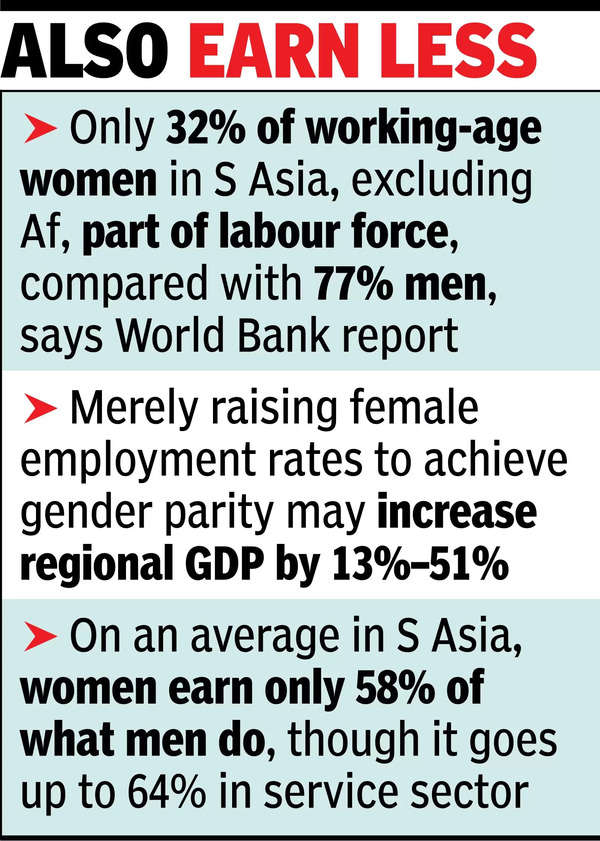
NEW DLEHI: While men command a premium to get a job after marriage, women face a “marriage penalty” resulting in a sharp drop in their labour force participation, a new World Bank report says.
It estimates that in India, post-marriage female employment rates drop by 12 percentage points, about one thirds of the female pre-marital employment rate, even in the absence of children.In contrast, there is a 13 percentage point premium for men post-marriage. While the premium for men erodes after five years, it persists for women.
“This marriage penalty among women without children persists up to five years after wedding in India and Maldives,” the report says, while asserting that social norms may also be at the root of the “marriage penalty”.
To make matters worse for women, there is also a “child penalty” as they are entrusted with childcare responsibilities, forcing many to opt out of the workforce.
India, and South Asia in general, have poor female labour force participation rate, estimated at 32% in 2023, and with most countries, barring Bhutan, in the bottom quartile of World Bank’s sample. “Women with more than secondary schooling or those who marry men with more than secondary schooling are less likely to be hit by the marriage penalty, suggesting education has a role in mitigating it,” it said.

S Asia’s rates of women’s labour force presence still low: Report
Higher education levels for men as well as women can improve the situation, the study said.
On the overall scenario, the ‘South Asia Development Update’ focused on “women, jobs and growth” highlights that South Asia’s rates of female labour force participation remain low despite faster-than average progress over the past three decades. Only 32% of working-age women in South Asia were in the labour force in 2023 — well below the region’s male labour force participation rate of 77%. The report further states that nearly two-thirds of working-age women are out of the labour force in the region.
The reports states that “if labour force participation rates for women were raised to those of men, South Asia’s regional GDP (and, by construction, also per capita income) would be 13–51% higher.”
World Bank chief economist for South Asia Franziska Ohnsorge asserted “if women worked in as productive jobs as men, GDP in the South Asian region could go up by up to 51%.” Calling South Asia, particularly India, a “bright spot” in the global economy, she said things could be “brighter” if the untapped potential of women is unlocked.
Poonam Gupta, director general of National Council of Applied Economic Research (NCAER) said, “We need to target institutional and societal causes creating the gender gaps in employment, while simultaneously making it easier, safer, remunerative, and professionally rewarding for women to join the workforce.”










